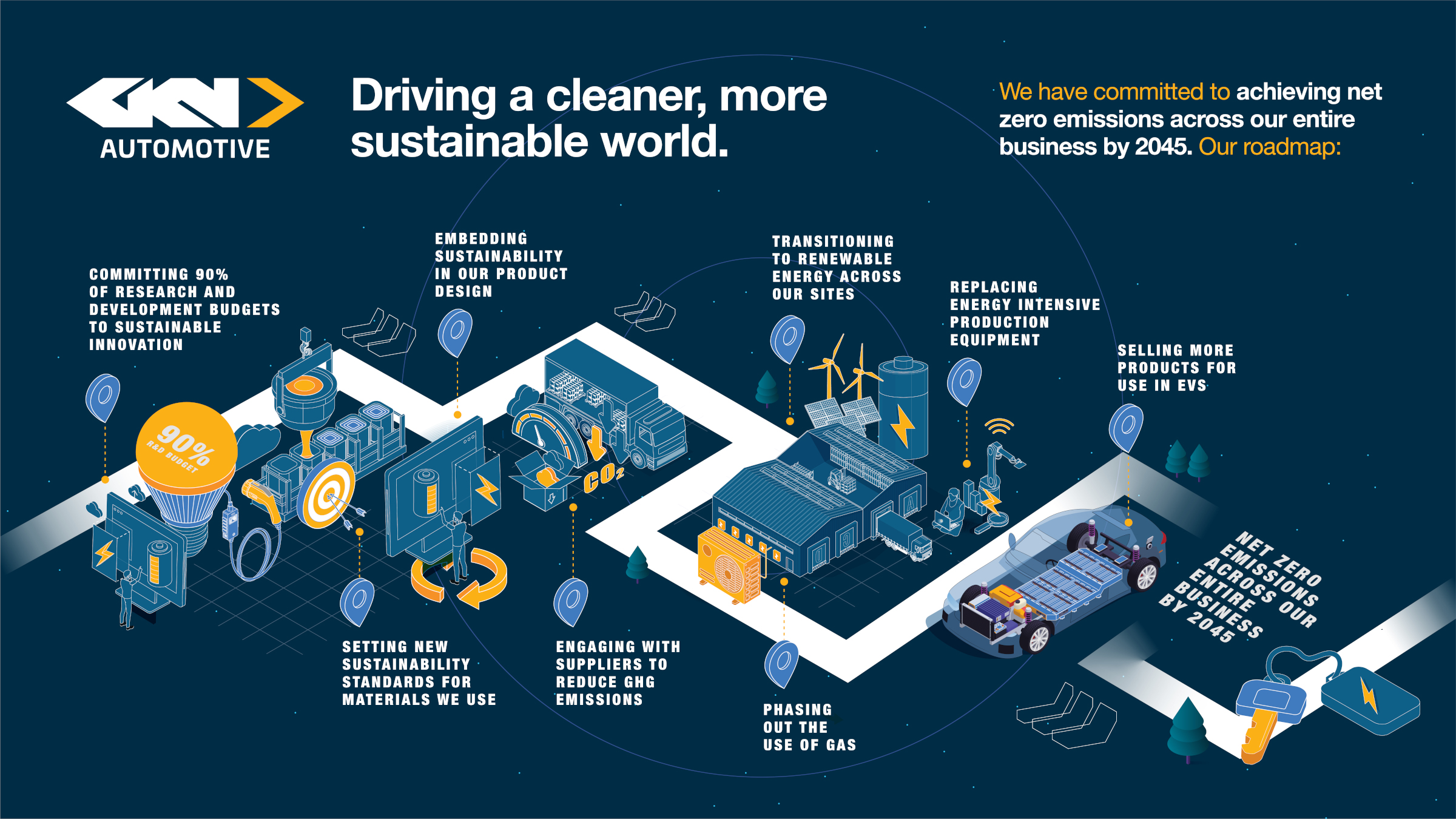We are embarking on a sustainable transformation as a business, with our customers, our suppliers, and as an industry. As the world undergoes one of the most profound and exciting transportation revolutions since the advent of the car - the electrification of the automobile - our energy, business strategy, and brightest minds are now all focused on developing the next generation of technologies that will enable a decarbonised automotive industry, faster.
Our journey in doing this starts with the decarbonisation of our own business operations and products. Helping guide this transformation, we have set ambitious Science-Based carbon reduction targets aligned to the levels required to limit global warming to 1.5°C, verified by the SBTi, a global body focused on accelerating companies across the world to halve emissions before 2030 and achieve net-zero emissions before 2050.
We have committed to achieving net zero emissions across our entire business by 2045. To help us get there, we have also committed to:
- Reduce the direct greenhouse gas (GHG) emissions from the operation of our 50+ global sites (scope 1) and the electricity we source (scope 2) by 45% by 2030, from a base year of 2021; and
- Reduce indirect (scope 3) GHG emissions – those produced across our value chain, for example by suppliers or through the end use of our products – by 25% in the same timeframe.
To meet these ambitious targets, we have developed a comprehensive carbon reduction plan, with commitments spanning across our operations – from product development to end use.
What steps are we taking to reach net-zero?
- Net zero energy audits of key sites: Wanting to understand the initiatives, budgets and timelines needed to reach net zero, third-party audits were conducted at a selection of our most energy-intensive sites. These provided a clear and credible pathway for decarbonising our facilities, guiding our approach.
- Phasing out gas for good: We are replacing end-of-life gas equipment on our sites with cleaner heat pumps and electric boilers to move away from gas use across our estate.
- Transitioning to renewable electricity: We have set out to procure 50% renewable electricity across our sites by 2025, increasing this to 75% renewable electricity use by 2030. Brokering PPAs (Power Purchase Agreements) and VPPAs (Virtual Power Purchase Agreements) will be our tool to achieve this, in locations where it’s possible.
- Driving energy efficiency across our operations:Introducing site-specific net-zero plans and efficiency targets for all of our European sites in 2024, expanding this initiative to cover the entire business moving forward.
- Committing 90% of our R&D budget: The vast majority of our value chain emissions come from the use of our products, so from 2025, we have committed to allocate 90% of our R&D expenditure per year to developing innovations that support the decarbonisation of the automotive sector.
- Setting a new sustainability standard for the materials we use: We are setting metal and material-use KPIs for the new products we are developing, this is to ensure we can produce the highest-performing products with the lowest reasonable impact. New product designs will utilise recycled aluminium and steel where possible and consciously design out carbon-intensive processes.
- Developing tools to embed sustainability into our design decisions: Up to 80% of the embedded carbon of our products is locked in the design phase. To better equip our design engineers and commercial teams, we are developing an innovative lifecycle analysis tool for our side-shifts division; this enables teams to quickly see the whole impact of their design decisions - from the materials used to the manufacturing footprint and their end-of-life impact.
- Prioritising Green Steel suppliers: Whilst we don’t directly operate steel furnaces, we use a lot of it. We have actively prioritised supplier partnerships with those who have transitioned to EAF’s (Electric Arc Furnaces). These are powered by electricity and produce significantly less carbon emission (vs traditional coal-based blast furnaces).
Clare Wyatt, Chief Communications and Sustainability Officer, commented:
"
This is just the first step for us - but as a leader in our industry, we are in a strong position to be a force for change and will continue to promote sustainability across our value chain – through our products, supply chain and operations.
”
For more information on how we’re driving a cleaner, more sustainable world, visit our sustainability page and see our roadmap below:

